Mealybug Ladybird - Cryptolaemus montrouzieri
FAMILY COCCINELLIDAE
This page contains information and pictures about Mealybug Ladybird Beetles that we found in the Brisbane area, Queensland, Australia

- Body length 4mm
This ladybird is also known as Mealybug Destroyer. This is a small ladybird beetle. This ladybird is famous on attacking mealybug, one of the worst pest in the world. This ladybird was exported from Australia to the United States in 1891 to control citrus mealybug in California.

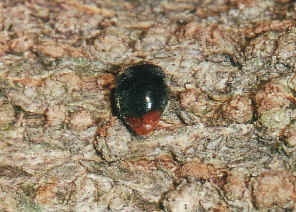
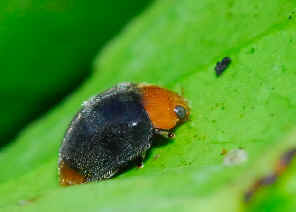
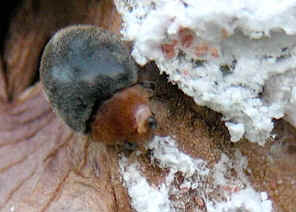
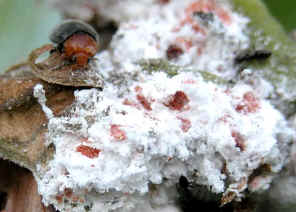
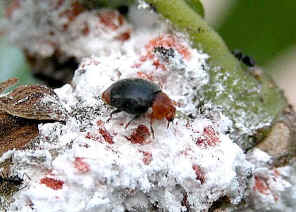
- In mid summer one of the Hibiscus plants in our backyard was heavily infected by the Prickly pear cochineal (Dactylopius opuntiae), as shown in the above pictures. We noticed that there were already the Mealybug Ladybirds feeding on them. We expected the Prickly pear cochineal infection problem will be fixed very soon. Yes, few weeks later, the Prickly pear cochineal infection was down to unnoticeable level. The only white stuff on the Hibiscus were the Mealybug Ladybird larvae.

- When ladybirds sense the danger, such as ants or spiders come close to them, they hide their legs and antenna under their body, and hold tight on where they sit. In the above picture, even a large jumping spider can do nothing above this.
- This ladybird is shy. It is hard to take its close-up pictures. It always stays at the other side of the leaf or stem when we come close. When disturbed, it drops to the ground. A few seconds later, it flies away.
The ladybird adults are dark green in colour, with thorax and head yellowish-brown. Their 'tails' are also brown in colour and look like their head. We expect to take a front photo, only find it is the tail after we enlarge the picture.
The Larva
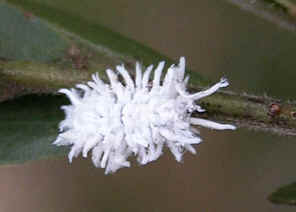
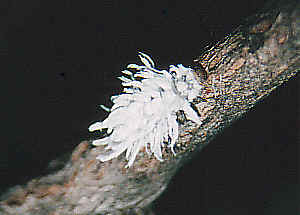
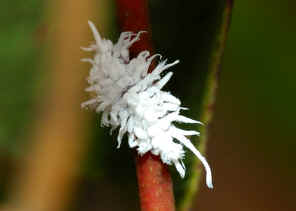
- Mealybug Ladybird larvae, body length 5mm.
- The larvae of this ladybird look like their major prey - the Mealybug, although they also prey on other soft bugs. Their eggs are yellow in colour.
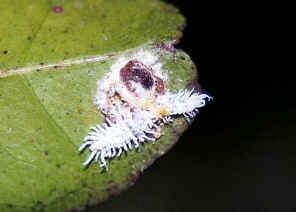
- The above first picture shows two ladybird larvae feeding on the scale insect on a Citrus leaf.
- Reference:
- 1. Australian Ladybird Beetles (Coleoptera: Coccinellidae) Their biology and classification - A.Ślipiński, Australian Biological Resources, 2007, p94.
- 2. Cryptolaemus montrouzieri - Biological Control, A Guide to Natural Enemies in North America
- 1. Australian Ladybird Beetles (Coleoptera: Coccinellidae) Their biology and classification - A.Ślipiński, Australian Biological Resources, 2007, p94.
